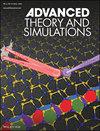Accurate Prediction of Hybrid Nanofluids Viscosity: A Comparison of Soft Computational Approaches, Empirical, and Theoretical Models
IF 2.9
4区 工程技术
Q1 MULTIDISCIPLINARY SCIENCES
引用次数: 0
Abstract
Hybrid nanofluids exhibit enhanced thermal properties compared to conventional nanofluids. Viscosity, critical for assessing heat transfer efficiency, influences pressure drop and pumping power. This study models hybrid nanofluid viscosity using Radial Basis Function (RBF), Multilayer Perceptron (MLP), and a Committee Machine Intelligent System (CMIS). A dataset of 584 viscosity data points is utilized. Particle Swarm Optimization (PSO) and Farmland Fertility Algorithm (FFA) are employed to train the RBF, while the MLP utilized Scaled Conjugate Gradient (SCG), Bayesian Regularization (BR), and Levenberg‐Marquardt (LM) algorithms. The CMIS is created by integrating MLP‐BR, RBF‐FFA, and RBF‐PSO networks. The AAPRE values for RBF‐PSO, RBF‐FFA, MLP‐LM, MLP‐SCG, MLP‐BR, and CMIS models are 1.7464, 1.6647, 2.6851, 2.1889, 2.1792, and 1.519, respectively. The R混合纳米流体粘度的准确预测:软计算方法、经验和理论模型的比较
与传统纳米流体相比,混合纳米流体表现出更强的热性能。粘度是评估传热效率的关键,影响压降和泵送功率。本研究采用径向基函数(RBF)、多层感知器(MLP)和委员会机器智能系统(CMIS)对混合纳米流体粘度进行建模。使用了584个粘度数据点的数据集。RBF采用粒子群优化(PSO)和农田肥力算法(FFA)进行训练,MLP采用缩放共轭梯度(SCG)、贝叶斯正则化(BR)和Levenberg‐Marquardt (LM)算法进行训练。CMIS是通过整合MLP - BR、RBF - FFA和RBF - PSO网络创建的。RBF - PSO、RBF - FFA、MLP - LM、MLP - SCG、MLP - BR和CMIS模型的AAPRE值分别为1.7464、1.6647、2.6851、2.1889、2.1792和1.519。R2值分别为0.9689、0.9394、0.4794、0.9727、0.9404和0.9688,表明具有最低平均绝对相对误差(AAPRE)和最高决定系数(R2)的CMIS模型是最准确的模型,在估计粘度方面优于其他模型,精度高于经验模型和理论模型。灵敏度分析表明,温度对粘度有显著的正影响,而纳米颗粒尺寸对粘度有显著的负影响。CMIS模型预测纳米流体粘度可靠,应用范围广,异常值最小。
本文章由计算机程序翻译,如有差异,请以英文原文为准。
求助全文
约1分钟内获得全文
求助全文
来源期刊

Advanced Theory and Simulations
Multidisciplinary-Multidisciplinary
CiteScore
5.50
自引率
3.00%
发文量
221
期刊介绍:
Advanced Theory and Simulations is an interdisciplinary, international, English-language journal that publishes high-quality scientific results focusing on the development and application of theoretical methods, modeling and simulation approaches in all natural science and medicine areas, including:
materials, chemistry, condensed matter physics
engineering, energy
life science, biology, medicine
atmospheric/environmental science, climate science
planetary science, astronomy, cosmology
method development, numerical methods, statistics
 求助内容:
求助内容: 应助结果提醒方式:
应助结果提醒方式:


